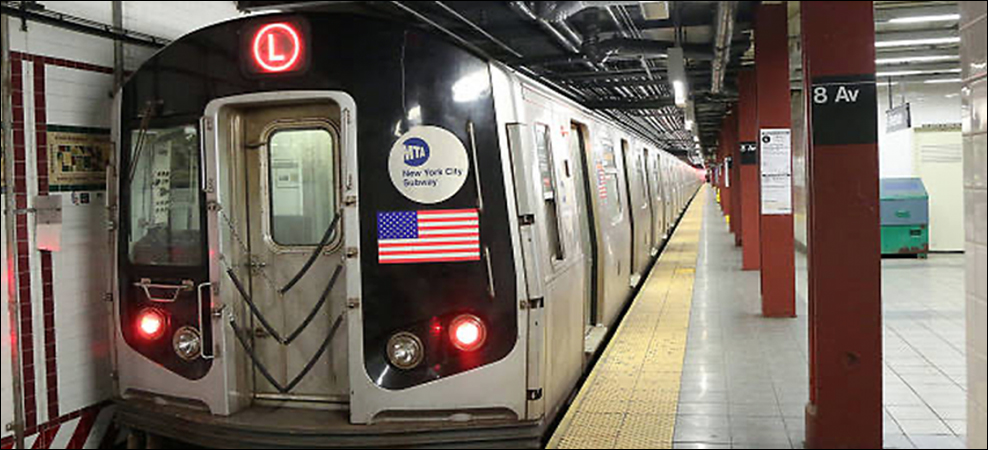Presented here are recent news announcements regarding the following organizations: Humatics, Siemens, the New York Metropolitan Transit Authority, SimplyRFID, InnovationLab, Trelleborg Sealing Solutions, New Boundary Technologies, Laird Connectivity, Memfault and Future Market Insights.
Humatics, Siemens Receive MTA UWB Train-Positioning Contract
Siemens and Humatics have been awarded a contract worth $14 million by the New York Metropolitan Transit Authority (MTA) to develop an ultra-wideband (UWB) solution throughout a span of 14.5 months. This expands on the success of a 2019 pilot that determined the effectiveness of using UWB in conjunction with communications-based train control (CBTC) systems, the companies report. This work is expected to deliver an interoperable UWB specification enabling competition, expand the UWB ecosystem and build the foundation for UWB use in New York City.
“Humatics is pleased to work with the MTA, our pilot partner Siemens and the broader mobility community to continue to advance next-generation transit technologies,” said Shawn Henry, Humatics’ CEO, in a prepared statement. “Our 2019 pilot, along with other projects, has demonstrated the capabilities of UWB in train control, and we’re excited to deliver interoperable UWB technology that will enable competition and promote innovation beneficial to the MTA and the New York City ridership. This project demonstrates the commitment of the MTA to UWB technologies and establishes an interoperable solution that is critical for accelerating signal modernization.”

Upgrading the city’s subway system with UWB and CBTC technologies is expected to boost system reliability and availability, increase capacity and improve the passenger experience. The company plans to build upon its 2019 UWB pilot, during which 5.5 miles of track and four trains were outfitted with UWB technology that passed train-control functional testing. The system was deemed safety-certifiable by independent assessors and has accumulated more than a million hours of operation. The pilot showed UWB equipment can replace several pieces of traditional CBTC positioning equipment, and that it is easier to install and maintain, reducing operating expenses.
In New York City, Humatics explains, UWB is the primary positioning sensor used by the Humatics Rail Navigation System (HRNS), a replacement for traditional railway odometry sensors such as tachometers, transponders and doppler radars. The HRNS is a navigation system based on sensor fusion algorithms that leverage sensors to solve navigation problems. According to the company, UWB is fused with sensors, such as inertial measurement units and the global navigation satellite system, to provide precise position, speed and acceleration data to train-control systems. These include CBTC, Positive Train Control and the European Rail Traffic Management System.
SimplyRFID Offers Inventory-Management Guide for Wine Sellers
SimplyRFID, a software and hardware development company that makes radio frequency identification tracking systems, has written a guide explaining how wine cellar companies can manage stock using RFID for less than $300 per month, using its Wave RFID solution. Businesses that deal with consumable stocks like food and beverages require inventory control, the company explains, without which they risk a shortage of stocks, as well as overstocks and other costly problems.
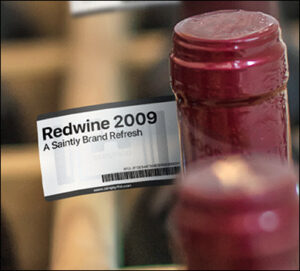
SimplyRFID
Moving wine to take inventory can upset sediment and disrupt the aging process, SimplyRFID explains, and it takes a long time to check each bottle. The process involves finding and scanning each barcode, then returning bottles to their proper places on a shelf. With Wave RFID, the company says, it takes seconds to record total bottle count by stock-keeping unit (SKU), variety and year. Bottles can be located by region, brand or bottler, and users would place a tag on a bottle, then scan its SKU via Wave, along with the RFID tag. If the SKU exists in the wine database, all details about that product will be loaded into the handheld device.
With this technology, SimplyRFID reports, employees can determine stock levels and make appropriate suggestions about wines in stock. The firm also offers its Popsicle RFID Flag Tag, designed for application to the neck of a wine bottle, which has a clear liner allowing users to see writing, and which is not impacted by a bottle’s material. Users can apply Popsicle tags to wine bottles via a peel tab.
The tag’s handle is narrow, SimplyRFID reports, making it suitable for wine bottle necks. Using Wave RFID, restaurants can obtain an accurate daily count of wine and liquor inventory within minutes, the company indicates. At closing time, employees can account for any wines that may have gone out of stock, then update the menu to reflect the available selections.
InnovationLab, Trelleborg Integrate Printed Sensors in Logistics App
InnovationLab, a provider of printed electronics, has announced that it has been working with Trelleborg Sealing Solutions to integrate its printed sensors into a new logistics application. Trelleborg’s IntelliStok inventory-management system, the company reports, is designed to eliminate the need for manual item scanning, thereby saving time, increasing efficiency and reducing costs. IntelliStok works with existing kanban-based systems to provide real-time inventory tracking of the company’s sealing products.
The solution utilizes printed pressure sensor matrices from InnovationLab, which are placed inside a warehouse’s existing storage bins. The sensors weigh the products in each bin and wirelessly transmit this data to the cloud. “This was a challenging application,” said Domenico Tucci, Trelleborg Sealing Solutions’ IoT solution architect, in a prepared statement. “As our seals can weigh less than 1 gram, we needed a sensitive, cost-effective system that could reliably provide accurate information. InnovationLab worked closely with us to develop a solution that exceeded our expectations and then manufactured the sensor matrices for us.”
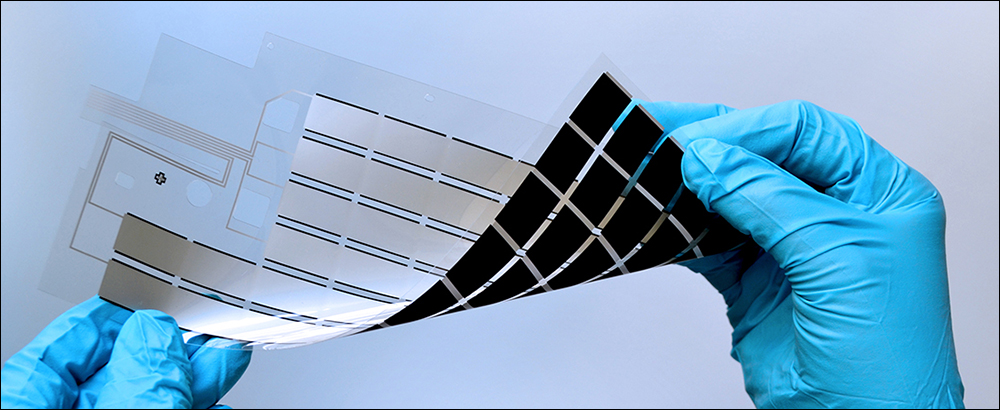
“We provide tailored solutions for our customers’ challenges, from the initial concept to the industrial production of the final product,” added Luat Nguyen, InnovationLab’s managing director, in the prepared statement. “Our expertise is based on an in-depth understanding of materials, processes and printing technologies. For Trelleborg, we researched and analyzed possible solutions, then designed and manufactured the optimal sensor matrix that met their specific needs.” Trelleborg says it set multiple requirements for the sensor matrix material, such as low cost and sufficient durability, in order to prevent deformation or creasing during use. InnovationLab undertook detailed research and testing of various materials until it identified one that could meet all of the criteria.
Trelleborg offers IntelliStok as a service to its customers. The solution triggers orders automatically for the replenishment of stock, directly in Trelleborg’s systems. Customers receive an email informing them of their order, and the stock arrives shortly thereafter. For Trelleborg’s customers, there are five standard-size sensor units available, which fit most bin types. The sensor matrices are integrated into a module that incorporates a microcontroller, a Wi-Fi chip for wireless connectivity and a 3.6-volt lithium battery.
New Boundary Offers IIoT Monitoring Solution
New Boundary Technologies, a provider of Internet of Things (IoT) and machine-to-machine applications, has announced the launch of RemoteVista, its Industrial IoT remote-monitoring solution powered by the company’s RemoteAware software. The application can monitor and control a range of indoor and outdoor sensors and equipment from anywhere via a single-pane-of-glass dashboard. With RemoteVista, New Boundary reports, the RemoteAware technology powers OEM solutions for distributors, resellers and systems integrators.
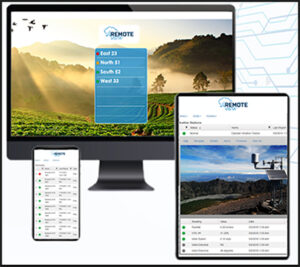 According to the company, RemoteVista offers Web applications for smartphones, tablets, laptops and PCs, with no coding or in-house software engineers required. The solution is designed for customers with hundreds or thousands of assets in agriculture, smart cities, smart energy, oil and gas, manufacturing, environmental monitoring and other applications. Value-added resellers, distributors, solution providers and systems integrators can utilize RemoteVista’s recurring software-as-a-service subscription model, and scalable solutions can be provided to customers within days. An API offers opportunities to provide value-added services for customer-specific requirements.
According to the company, RemoteVista offers Web applications for smartphones, tablets, laptops and PCs, with no coding or in-house software engineers required. The solution is designed for customers with hundreds or thousands of assets in agriculture, smart cities, smart energy, oil and gas, manufacturing, environmental monitoring and other applications. Value-added resellers, distributors, solution providers and systems integrators can utilize RemoteVista’s recurring software-as-a-service subscription model, and scalable solutions can be provided to customers within days. An API offers opportunities to provide value-added services for customer-specific requirements.
“Delivering enterprise-class Industrial IoT applications can be a costly and time-consuming process requiring highly skilled software engineers,” said Kim Pearson, New Boundary Technologies’ CEO, in a prepared statement. “Distributors, resellers and systems integrators can now deliver secure solutions at scale in days rather than months. Our channel partners sell their hardware faster and gain new recurring revenue, while delivering quality solutions to their customers quickly at lower cost.”
RemoteVista is hardware-, communication- and cloud-independent. The system can be integrated with wireless hardware using NB-IoT, LTE Cat-M and LoRaWAN technologies. Available now, the system has built-in integration with Amazon AWS IoT Core and Microsoft Azure IoT Hub.
Laird Connectivity, Memfault Partner on IoT/Bluetooth Debugging Platform
Laird Connectivity, a wireless technology provider, has announced a partnership with cloud-based connected device observability company Memfault. For developers using the Pinnacle 100 low-power cellular socket modem and Sentrius MG100 LTE-M/NB-IoT/Bluetooth gateway, the two companies will provide integrated access to Memfault’s remote debugging, continuous monitoring and firmware update platform. The integration of Memfault’s SDK will provide Laird customers with free access to all platform features, the companies report, enabling them to accelerate product development, as well as monitor and update products after release.
Memfault’s observability platform allows developers to remotely monitor the health of their devices and analyze software issues in both the Pinnacle 100 and MG100 Gateway designs. According to the two companies, remote debugging, monitoring and updating features enable developers to act proactively, reducing costs and saving time. This, the partners note, is useful for customers that have products mass-deployed or in remote locations. The system tracks reboots, core dumps on crashes and statistics like LTE signal strength.
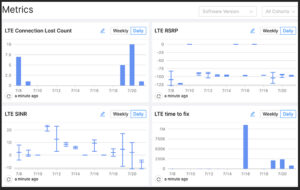 “By partnering with Memfault, we enable our customers to gather valuable insights, both during development and while end devices are deployed in the field,” said Jonathan Kaye, Laird Connectivity’s senior product director, in a prepared statement. “Recent Memfault momentum, like their Nordic Semiconductor partnership and their critical role in the Zephyr project, speak to the company’s expanding presence in the connected device ecosystem, which made the choice to work with them an easy one.”
“By partnering with Memfault, we enable our customers to gather valuable insights, both during development and while end devices are deployed in the field,” said Jonathan Kaye, Laird Connectivity’s senior product director, in a prepared statement. “Recent Memfault momentum, like their Nordic Semiconductor partnership and their critical role in the Zephyr project, speak to the company’s expanding presence in the connected device ecosystem, which made the choice to work with them an easy one.”
If a fault occurs, Laird developers receive notifications directly through Memfault’s cloud-based portal. Memfault’s fleet-wide fault-aggregation techniques show the occurrence of a fault across a population of devices, making developers aware of any issues. The frequency of occurrence, the number of affected devices and the timeline allow developers to identify if a device or software update could result in a fault, as well as that fault’s potential impact. This allows developers to locate an issue’s root cause and push an over-the-air update to fix it via Memfault. Device monitoring and fleet-level metrics enable developers to debug and update devices from a single platform.
RFID Use Boosts Plastic Pharmaceutical Bottle Sales
According to a report from Future Market Insights, the global plastic pharmaceutical bottles market is projected to grow at a rate of 10.3 percent between 2021 and 2031. Driven by worldwide healthcare sector growth, the market has been forecast to register 10 percent year-on-year growth, reaching a valuation of $29.6 billion this year. This, the company says, is indicative of a surge in demand compared to the sales growth registered between 2013 and 2020. Plastic pharmaceutical bottles are widely used in the healthcare industry for packaging solid and liquid formulations, the research firm explains.
According to Future Market Insights, expansion in the healthcare and pharmaceutical sectors will create conducive environment for market growth. The Centers for Disease Control and Prevention, in 2018, indicated that the national healthcare expenditure in the United States stood at $11,172 per capita. With a rise in healthcare spending, the firm reports, the country will become a lucrative market for the sales of pharmaceutical plastic bottles. U.S. sales are predicted to account for 79.3 percent of the overall sales registered in North America by 2031.
According to the research, India’s healthcare market is anticipated to surpass a valuation of $372 billion by 2022. Government initiatives undertaken to provide high-quality and affordable healthcare facilities throughout that nation will remain a chief growth driver, Future Market Insights reports, supplementing the expansion of plastic pharmaceutical bottles sales in the coming years. The firm says the use of barcodes, labels, tags and other anti-counterfeiting technologies is increasing in the pharmaceutical sector, with radio frequency identification and QR codes being used to track inventory levels.
The report indicates that the United States is expected to account for more than 79.3 percent of the total North American market, which is anticipated to grow 2.5 times its current market size by 2031. The demand for plastic pharmaceutical bottles in the United Kingdom is expected to increase by 8 percent throughout the forecast period. The market in China, meanwhile, is estimated to account for more than 59 percent of the total demand in East Asia and is projected to grow at 11.4 percent during the forecast period.
According to the report, sales in India are projected to reach $1.9 billion by 2021, steered by surging pharmaceutical production. Based on bottle type, plastic bottles for ophthalmic and nasal formulations have emerged dominant and are expected to account for more than 42.7 percent of sales this year. Polyethylene terephthalate will remain the preferred material for plastic pharmaceutical bottle production, the research predicts, surpassing a valuation of $8.3 billion.

